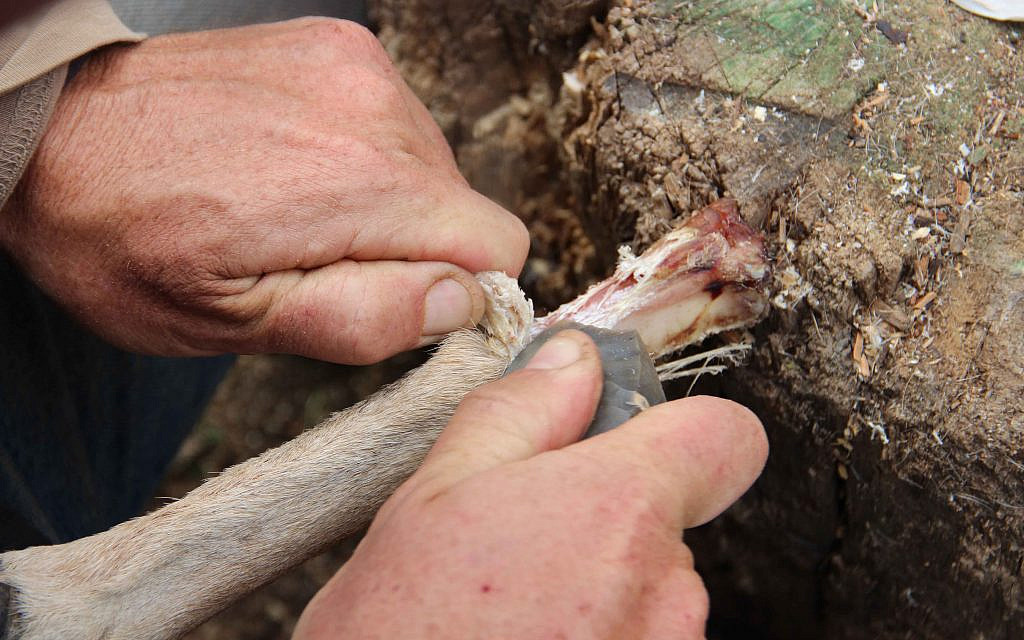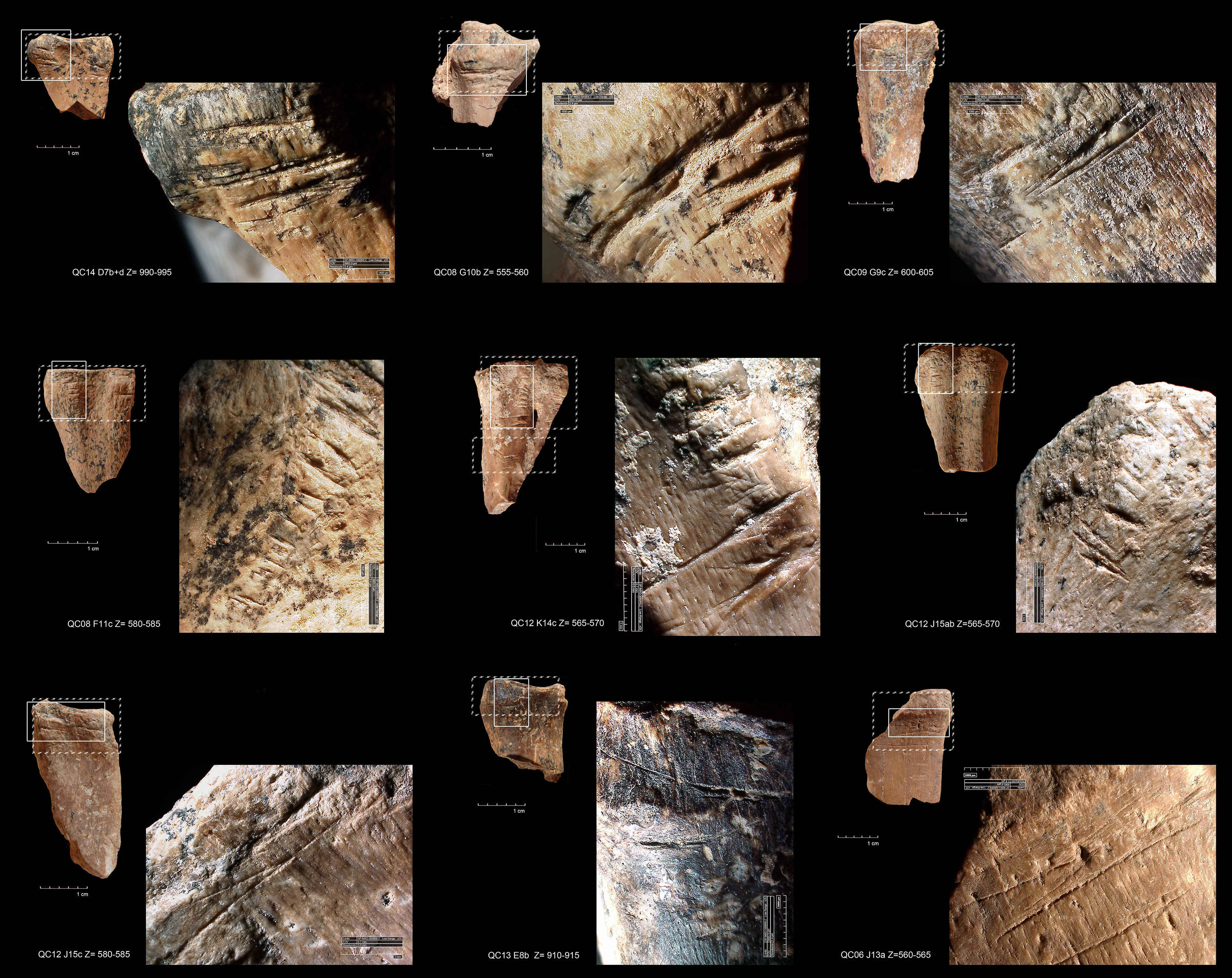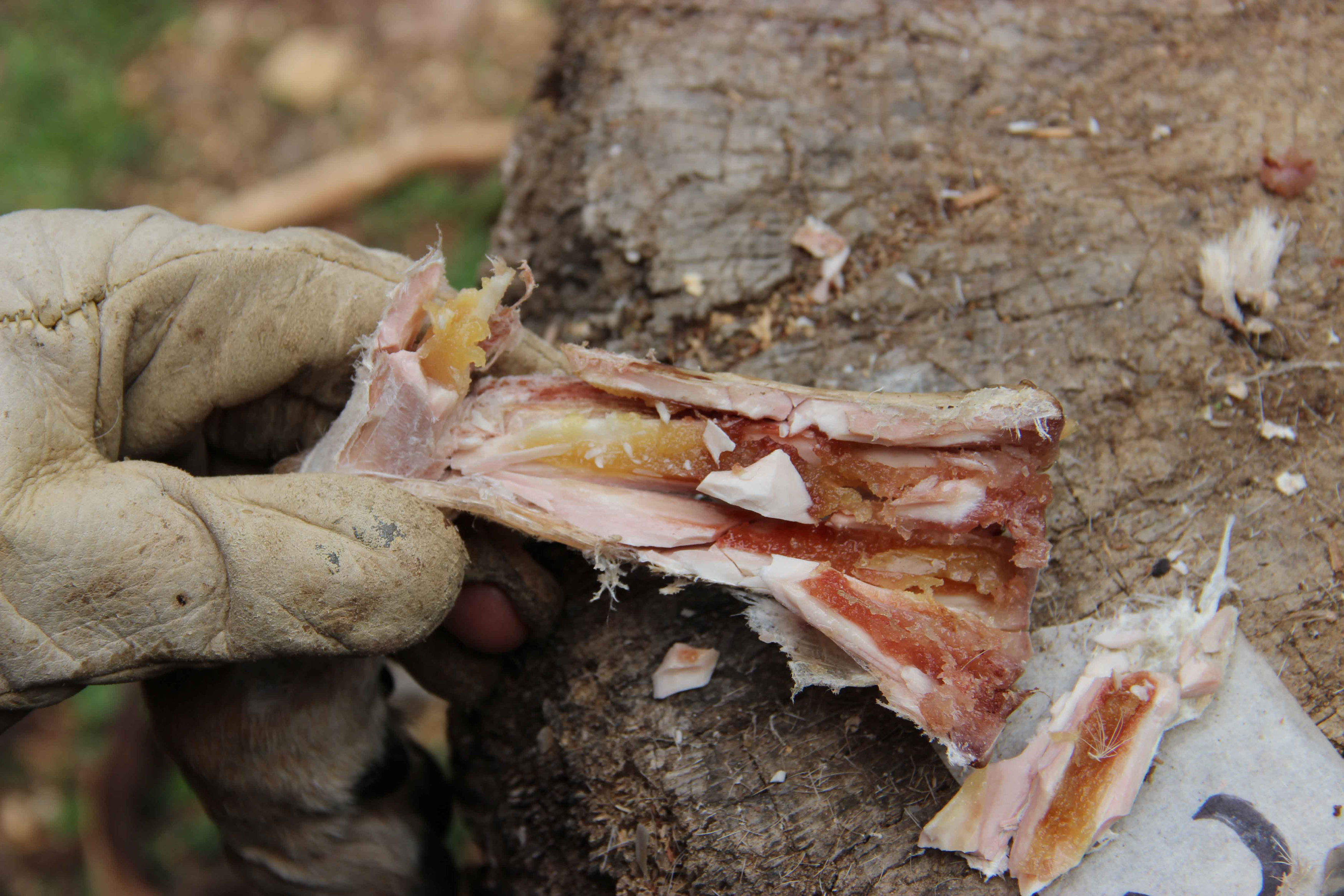Israeli researchers: prehistoric humans ‘stored bone marrow like canned soup’
Tel Aviv Uni scientists reveal that humans lived in Qesem Cave in Israel between 420,000 and 200,000 years ago, and saved animal bones for up to nine weeks before eating them

While you might expect to find soup, tinned fruit, or some condensed milk in a store cupboard, prehistoric humans were storing bone marrow.
Researchers have found evidence that humans living in Qesem Cave in Israel between 420,000 and 200,000 years ago stored long bones so they could could tuck into the marrow later.
They say the discovery suggests these Palaeolithic people had the foresight to anticipate their future needs, rather than surviving in the “here and now”.
Get The Jewish News Daily Edition by email and never miss our top stories Free Sign Up
In collaboration with scholars from Spain, the Tel Aviv University researchers found evidence the humans saved animal bones for up to nine weeks before feasting on them.
Professor Ran Barkai, from Tel Aviv University, said: “Bone marrow constitutes a significant source of nutrition and as such was long featured in the prehistoric diet.
“Until now, evidence has pointed to immediate consumption of marrow following the procurement and removal of soft tissues.
“In our paper, we present evidence of storage and delayed consumption of bone marrow at Qesem Cave.”
While study leader Dr Ruth Blasco added: “This is the earliest evidence of such behaviour and offers insight into the socioeconomics of the humans who lived at Qesem.
“It also marks a threshold for new modes of Palaeolithic human adaptation.”

To see whether residents of the cave sometimes saved marrow for later, the scientists analysed cut marks on the long bones of the hands and feet – metapodials – from the remains of 81,898 animals – mostly fallow deer – found at the site.
For comparison, the researchers monitored changes in red deer marrow preservation and processing marks over a period of nine weeks.
Because dry flesh is more attached to the bone, greater effort is required to remove it, leaving behind a distinct pattern of marks.
In the experimental set, short incisions and sawing marks predominated when the skin was removed after two or more weeks.
The number of marks increased from the fourth week onward, according to the study published in Science Advances.
Researchers say 80% of bones from the Qesem Cave had precisely these marks.

Professor Jordi Rosell of Universitat Rovira i Virgili, Spain, said: “Prehistoric humans brought to the cave selected body parts of the hunted animal carcasses.
“The most common prey was fallow deer, and limbs and skulls were brought to the cave while the rest of the carcass was stripped of meat and fat at the hunting scene and left there.
“We found that the deer leg bones, specifically the metapodials, exhibited unique chopping marks on the shafts, which are not characteristic of the marks left from stripping fresh skin to fracture the bone and extract the marrow.”
The researchers suggest the deer bones were kept at the cave covered in skin to facilitate the preservation of marrow for consumption in time of need.
According to the research, this is the earliest evidence in the world of food preservation and delayed consumption of food.

Thank you for helping to make Jewish News the leading source of news and opinion for the UK Jewish community. Today we're asking for your invaluable help to continue putting our community first in everything we do.
For as little as £5 a month you can help sustain the vital work we do in celebrating and standing up for Jewish life in Britain.
Jewish News holds our community together and keeps us connected. Like a synagogue, it’s where people turn to feel part of something bigger. It also proudly shows the rest of Britain the vibrancy and rich culture of modern Jewish life.
You can make a quick and easy one-off or monthly contribution of £5, £10, £20 or any other sum you’re comfortable with.
100% of your donation will help us continue celebrating our community, in all its dynamic diversity...
Engaging
Being a community platform means so much more than producing a newspaper and website. One of our proudest roles is media partnering with our invaluable charities to amplify the outstanding work they do to help us all.
Celebrating
There’s no shortage of oys in the world but Jewish News takes every opportunity to celebrate the joys too, through projects like Night of Heroes, 40 Under 40 and other compelling countdowns that make the community kvell with pride.
Pioneering
In the first collaboration between media outlets from different faiths, Jewish News worked with British Muslim TV and Church Times to produce a list of young activists leading the way on interfaith understanding.
Campaigning
Royal Mail issued a stamp honouring Holocaust hero Sir Nicholas Winton after a Jewish News campaign attracted more than 100,000 backers. Jewish Newsalso produces special editions of the paper highlighting pressing issues including mental health and Holocaust remembrance.
Easy access
In an age when news is readily accessible, Jewish News provides high-quality content free online and offline, removing any financial barriers to connecting people.
Voice of our community to wider society
The Jewish News team regularly appears on TV, radio and on the pages of the national press to comment on stories about the Jewish community. Easy access to the paper on the streets of London also means Jewish News provides an invaluable window into the community for the country at large.
We hope you agree all this is worth preserving.
-
By Brigit Grant
-
By Laurent Vaughan - Senior Associate (Bishop & Sewell Solicitors)
-
By Laurent Vaughan - Senior Associate (Bishop & Sewell Solicitors)
-
By Laurent Vaughan - Senior Associate (Bishop & Sewell Solicitors)
-
By Laurent Vaughan - Senior Associate (Bishop & Sewell Solicitors)





















